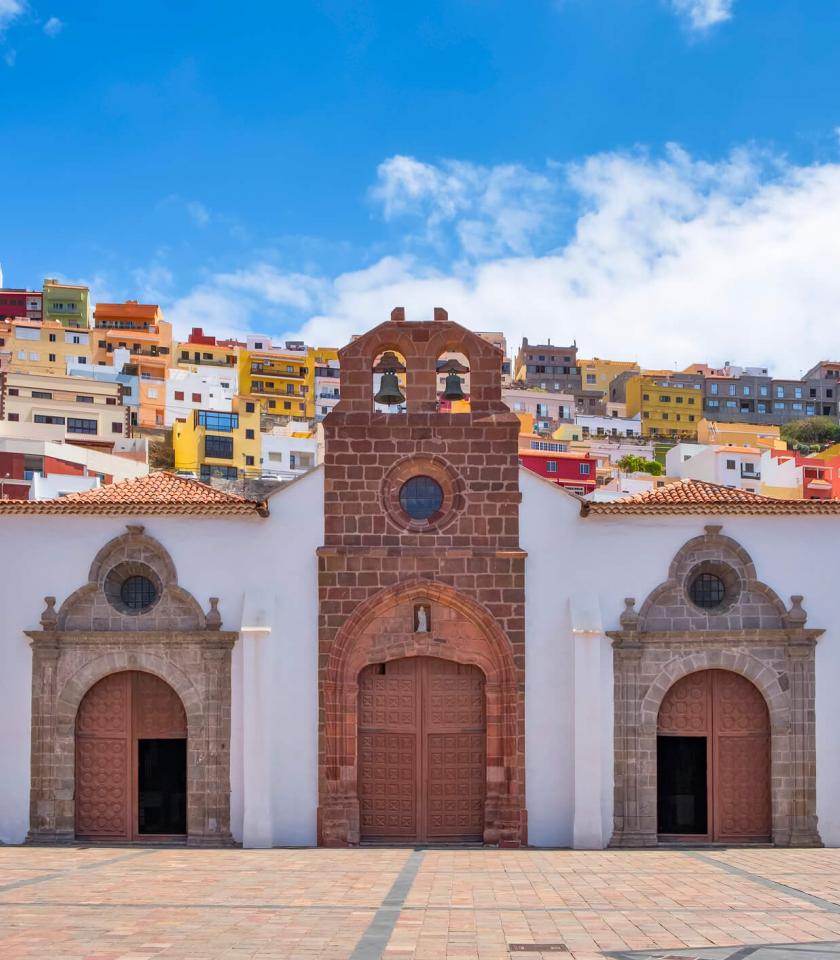As travel begins to open up, we are starting to think about all the wonderful places around the world to travel as a TEFL teacher. This week it's northern Spain.
Wonderful beaches, lush valleys, breath-taking mountains, cultural diversity, vibrant cultural and artistic programs, an abundance of Michelin-starred restaurants. The Basque Country, a region with more than 5000 years of history, has it all. But what would it be like to teach English as a Second Language there? What are the unmissable experiences to add to your bucket list? In this article we have focused on the Basque Country on the Spanish side and gathered some tips to take with you on your adventure.
Students and types of courses
Perhaps because at school they currently study at least Basque, Spanish and English, the Basques are usually motivated and hard-working when it comes to learning languages. They start taking English lessons from an early age (even at three - four year olds). It is common for young learners to be engaged in different after school activities such as English, sports, music lessons and, at times, other language courses (especially French, because of the bordering French Basque Country). Therefore, to avoid younger students getting restless, it is important for EFL teachers to include in their lesson plans some activities which require movement, varied interaction patterns and seating arrangements.
If you teach in the Basque Country, you might also be assigned some exam preparation classes (particularly Cambridge exams), as in this region students of all ages tend to invest their time and energy into getting qualified. You may also have a class or two of retired learners, as Basque people are often active throughout their whole lifetime. Some of them, aside from learning English, attend university courses alongside doing sports or taking traditional Basque dance lessons.
Cultural aspects to be aware of
In the Spanish Basque Country they speak two official languages: Spanish and Basque, a tongue which is not related to any other on Earth. Depending on the area where you work, you might teach young children who only speak Basque since at home it is their predominant spoken language. These students will eventually learn Spanish at school. As a teacher try to be sensitive about this issue and if other children turn to Spanish at some point during the lesson swiftly take them back to English, since in this context it can work even more as a common, safe ground.
The Basque people are immensely proud of the richness of their culture. Across the calendar year there are many festivals which are fascinating to participate in as an outsider. For instance, if you happen to be in San Sebastián on January 20th, you can’t miss Tamborrada in which thousands of locals take to the streets to bang on drums in what is a very noisy affair! Middle and high school students normally prepare in advance for this festival, which is also called San Sebastián’s Feast day. Even before the 20th, you may hear drums all around the city. If you attend this festival, you will probably recognise some of your students performing the street parade.
Ask your students to talk you through the significance of the Basque beret you can see everywhere around the region or the meaning of the traditional customs locals wear during festivals such as San Sebastián Saint Thomas’s Day in December.
Also because of the unique natural beauty of this area (extremely green and characterised by the Atlantic Ocean, the Pyrenees and beaches surrounded by cliffs), sports are an important aspect of life in the Basque Country. Consequently, organising conversation or vocabulary lessons on this topic may prove to be successful both with young and older students. In addition to Basque traditional sports (such as the regattas which come from local fishermen of the past), people often go surfing, cycling and hiking. Basketball is also a popular sport here and even Rugby to a lesser degree. Football remains the number one sport here though and the two biggest clubs in the region are Real Sociedád (based in San Sebastian) and Athletic Club Bilbao who regularly contest the Basque derby.
Places to visit at the weekend
Choosing where to go on an excursion here can be a challenge because every corner of the Basque Country is fascinating. San Sebastián is worth visiting as often as you can, not only for its three beaches (Ondarreta, La Concha and Zurriola), buzzing Old Town and beautiful scenery, but also for its art exhibitions, sport and cultural events (e.g. in September the regattas of La Concha and the International Film Festival).
Bilbao’s iconic Guggenheim Museum is unmissable, together with a stroll along the streets of the city’s Old Town and a ride to the peak of Mount Artxanda. If you prefer small towns to cities, you should certainly visit Hondaribbia (a ferry ride away from Hendaye, in France) and Pasaja (you can go there either by foot or bus from San Sebastián). Both are charming and colourful fishing villages. Make sure to get on the boat which several times a day goes from Pasaja San Pedro to Pasaja San Juan, which is just a quick voyage away and the prettiest part to visit.
Best local food
Basque cuisine is renowned worldwide. Since 2001 San Sebastián has boasted a Basque Culinary Center, which offers both university degree courses in the culinary arts and cooking lessons open to local enthusiasts and foreign visitors.
You can’t visit the Basque Country without having at least a few pintxos; small and delicious finger foods you can savour with a drink at almost any bar or tavern of this region. Pintxos can be either warm or cold; they range from simple snacks such as the classic slice of tortilla de patatas served on a piece of bread to elaborated mini dishes such as txalupa (puff pastry with king prawns, mushrooms, and grated cheese) or txangurro (spider crab tartlet).
Going out for pintxos is one of the most common activities in the Basque Country, since there is so much choice both in terms of food and places where to sample them. The old towns of San Sebastián and Bilbao are buzzing with life, colours and sounds every night of the week; people tend to enjoy their pintxos outside when weather permits otherwise they congregate inside the many bars that serve them. On the evenings of pintxo-pote (varying depending on the cities or, in some cases, on the neighbourhoods) it is even more advisable to have dinner with pintxos rather than with a traditional meal. For this tradition bars and restaurants provide their customers with combinations of a pinxto and a pote (literally, a pot or jar, but meaning a drink in the Basque language) at a more affordable price.
What drinks go best with pintxos? Surely txakoli, a white wine typical of this region, which you can often see locals pouring from a certain height above the glass to make it more slightly more sparkling. If you don’t like wine, why not try sagardoa (‘cider’ in the Basque Country) instead? Take your friends on a cultural and culinary trip to a local cider house, where you can enjoy the unlimited cider which flows directly from the barrel tap into your glass.
A CELTA in Spain
If you would like to take your CELTA in Spain, our fantastic destinations are listed here.



